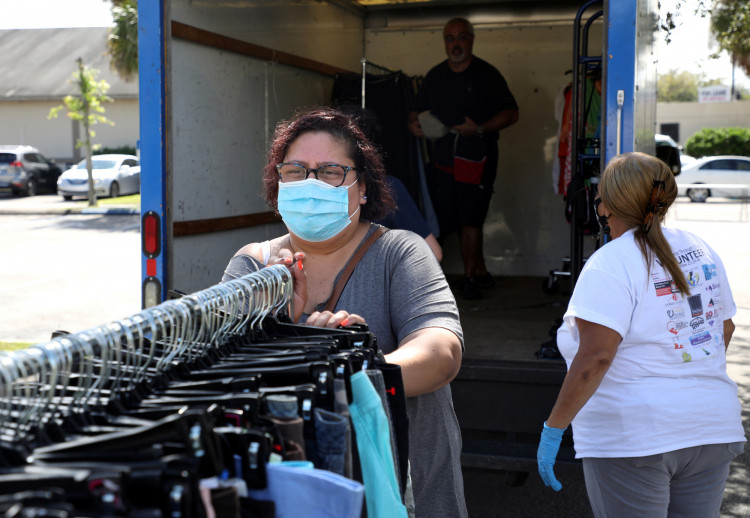In a week marked by new labor market data, the U.S. saw an increase in jobless claims, adding to the narrative of a cooling economy that aligns with the Federal Reserve's efforts to temper inflation. The latest figures show a rise in unemployment benefit applications, reflecting a trend that may prompt the Fed to consider rate cuts in the near future.
The Labor Department reported that for the week ending July 13, initial claims for unemployment benefits rose by 20,000 to 243,000 from the previous week's 223,000. This marks the eighth consecutive week that claims have stayed above the 220,000 mark. Before this period, claims had dipped below 220,000 in almost every week of 2024.
These weekly jobless claims are widely seen as a proxy for layoffs. Chris Larkin, managing director of trading and investing at E-Trade, noted, "The Fed asked to see more evidence of a cooling economy, and for the most part, they've gotten it. Add today's weekly jobless claims to the list of rate-cut-friendly data points."
While the Federal Reserve has raised its benchmark borrowing rate 11 times since March 2022 to combat the highest inflation in four decades, the central bank's strategy aimed to cool the labor market and curb wage growth, which can drive inflation. Despite these efforts, analysts do not expect the Fed to cut rates at its upcoming meeting later this month, although a rate cut in September appears likely.
The number of Americans receiving unemployment benefits, known as continuing claims, rose after a brief decline the previous week. Approximately 1.87 million people were collecting benefits for the week ending July 6, an increase of about 20,000 from the previous week and the highest level since November 2021. This rise in continuing claims suggests that those receiving unemployment benefits are finding it harder to secure new employment.
Job cuts have been reported across various sectors, including agricultural manufacturer Deere and media outlets like CNN. The four-week average of claims, which smooths out weekly volatility, rose by 1,000 to 234,750.
Strong consumer demand and a resilient labor market have helped avert a recession that many economists had forecast during the Fed's series of rate hikes. With inflation easing, the Fed's goal of a soft landing-lowering inflation without triggering a recession and mass layoffs-seems within reach. However, recent government data indicate some weakening in the labor market. The unemployment rate ticked up to 4.1% in June, even as employers added 206,000 jobs. Job postings in May rose slightly to 8.1 million, but April's figure was revised lower to 7.9 million, marking the first time since February 2021 that postings fell below 8 million.
The latest jobless claims report from the Labor Department also indicated that it is becoming harder for the unemployed to find new jobs compared to last year. Unemployment rolls have swelled to the highest level in over two and a half years, consistent with a recent uptick in the jobless rate. This loosening labor market and ebbing inflation position the Federal Reserve to consider cutting interest rates in September, with financial markets anticipating further cuts in November and December.
Nancy Vanden Houten, lead U.S. economist at Oxford Economics, commented, "Taking a step back from the noise in the data, jobless claims have drifted higher since the start of the year. We think the rise so far is consistent with a cooling labor market that is characterized more by a slower pace of hiring rather than by higher layoffs."
Unadjusted claims jumped by 36,824 to 279,032 last week, with significant increases in states like Texas, California, Georgia, Missouri, New York, Pennsylvania, and South Carolina. The rise in claims in Texas was likely boosted by Hurricane Beryl. These increases offset declines in states like New Jersey, Indiana, and Massachusetts.
The Federal Reserve's "Beige Book" report noted a slight rise in employment from late May through early July but highlighted a decline in manufacturing employment. The report added that businesses in several districts expect to be more selective in hiring and may not fill all open positions.
The claims data covered the period during which the government surveyed business establishments for July's nonfarm payrolls report. Claims increased slightly between the June and July survey weeks. Nonfarm payrolls rose by 206,000 jobs in June. Data next week on the number of people receiving benefits after an initial week of aid, a proxy for hiring, will provide more insight into the labor market's state in July.
The Fed has maintained its benchmark overnight interest rate in the 5.25%-5.50% range for the past year, having raised it by 525 basis points since 2022. Jeffrey Roach, chief economist at LPL Financial, remarked, "We learned from the recent Beige Book that businesses are not filling open positions as aggressively as they were in previous months. We should expect more cautionary rhetoric from Fed policymakers about the labor market."






